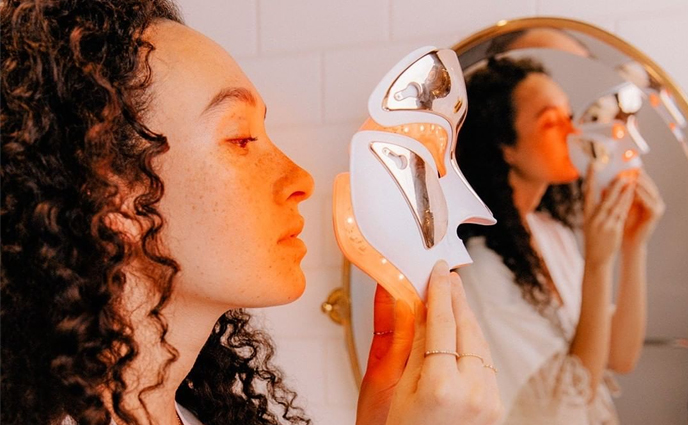It really depends on the office. "I've seen some locations use the exact devices offered at department stores, which is totally fine because they work!" says celebrity facialist and dermatological nurse Natalie Aguilar. "However, most in-office devices are larger, have stronger wavelengths and have way more bulbs which require less treatment time. You can cover the entire face, neck and chest in 10 minutes. There are even LED body beds so you can treat your entire face and body in 10 to 20 minutes! At-home devices are smaller, making treatment time longer because the size can only treat smaller areas at a time, but many can't make time for multiple weekly sessions so this is where an at-home device would give great results and be beneficial."
Image via Imaxtree
LED light is generally considered safe for most skin types. But if you're pregnant or have particularly sensitive skin, make sure you consult with your doctor before purchasing any device. It's best to avoid treating compromised skin, though. When doing an at-home treatment Aguilar recommends avoiding areas that are burned or areas with very inflamed acne or rashes unless your doctor gives you the green light. You'll also want to avoid tattoos and waxed sections or skip treatments altogether if you're a fan of dermaplaning.
It's also important to note that LED devices only work when used consistently. So if you don't have time to use a device a few times a week, it won't be worth investing in. That said, there are also people who overuse these devices.
"Only use LED for the amount of time recommended. If the company recommends 10 minutes, only use it for 10 minutes," says Aguilar. "Just because we don't feel anything doesn't mean it's not working so it's important to follow the manufacturer's instructions."
Image via Imaxtree






